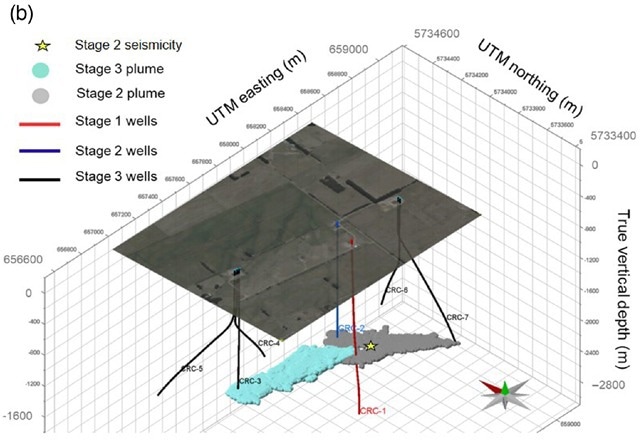According to a new study, scientists at a field site in Victoria, Australia, are among the first to make use of fiber optic distributed acoustic sensing (DAS) for high-accuracy tracking of induced seismicity from a small carbon dioxide (CO2) injection.

Diagram of Otway DAS installation. Image Credit: Seismological Research Letters
The study has been reported in the Seismological Research Letters journal.
The CO2CRC Otway Project in Victoria is considered a research test site for the subsurface storage of carbon dioxide as one possible approach to decrease the effects of climate-warming carbon emissions.
There is a risk of induced earthquakes as gigatons of carbon dioxide have been injected within the same geologic basin by several storage projects during decades of operation, and researchers would like to better comprehend how this seismicity has been activated and how it evolves with time.
Among the intriguing details revealed by the new DAS deployment at Otway: the small earthquakes that joined two injection phases at the site seem to track the saturation front of the CO2 plume inside the rock instead of the pressure front from an injection.
As far as we know, the Otway Project remains the only CO2 storage project where induced seismicity was at the very least coincident with the saturation front movement, not the pressure front.
Stanislav Glubokovskikh, Study Lead Author, Lawrence Berkeley National Laboratory
Glubokovskikh added, “We relied on the frequent snapshots of the storage formation to relate the CO2 plume evolution to induced seismicity. It is hard to think of another practical monitoring system apart from the multi-well DAS vertical seismic profiling which could provide such temporal and spatial resolution for a small CO2 plume.”
At Curtin University in Perth, Australia, the seismic monitoring system was developed by a group of geophysicists, headed by Roman Pevzner and Boris Gurevich, to depend on five deep boreholes that have been outfitted with sensitive fiber optic cable to track a 15,000 metric ton CO2 injection, known as Stage 3, at the Otway site more than 610 days. Around 17 small seismic events during that period, with an utmost magnitude of 0.1 was detected.
An earlier “Stage 2C” CO2 injection at the site of the same size was tracked at the time by using geophones buried below the surface that detected numerous microseismic events.
As far as stage 3 injection was concerned, part of the focus was to look more closely at potential cost-efficient and long-term monitoring of geological carbon storage, stated Glubokovskikh.
To enable the long-term monitoring, we had to use a permanent downhole installation of the seismic sensors. Otherwise, deployment and demobilization of the array for each active seismic survey would be prohibitively costly and cause too much interruption to the land owners. DAS is the optimal technology for such conditions.
Stanislav Glubokovskikh, Study Lead Author, Lawrence Berkeley National Laboratory
Also, the DAS observations disclosed the seismogenic fault present below the surface, which was not captured in earlier seismic images.
According to Glubokovskikh, exactly what mechanisms are activating the small earthquakes at the site is yet to be understood, even though the fascinating observation that the seismicity concurs with CO2 saturation might provide a few clues.
Geochemical weakening of the reservoir faults by CO2 seems like a plausible explanation, given that some of the core samples from the injection interval broke down during CO2 core-flooding experiments.
Stanislav Glubokovskikh, Study Lead Author, Lawrence Berkeley National Laboratory
However, the mineralogical composition of the fault gauge and the flow and pore fluid composition at the site are yet to be understood, thereby making it difficult to verify geochemical weakening, he noted.
In addition to the seismic events activated within the Stage 2C CO2 plume, a second group of events happened outside of any CO2 accumulation regions.
“These [second group] events occurred only during the injection operations, but showed no clear relationship to either the injection pressure or saturation plume movement,” stated Glubokovskikh.
The Otway project is getting into a Stage 4 injection, which will take place next to the earlier two CO2 plumes.
Glubokovskikh added, “Thus, we will likely get another set of induced seismic events that will provide more insights into the triggering mechanism. Even if the new injection will produce no detectable events, this fact may be perceived as another evidence of the flow-related nature of the Otway seismicity.”
Journal Reference
Glubokovskikh, S., et al. (2023) Multiwell Fiber Optic Sensing Reveals Effects of CO2 Flow on Triggered Seismicity. Seismological Research Letters. doi.org/10.1785/0220230025.